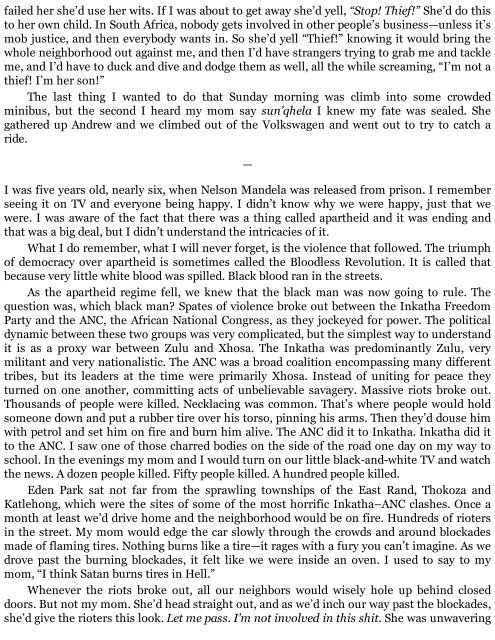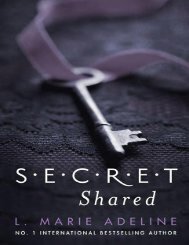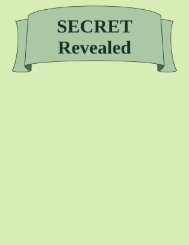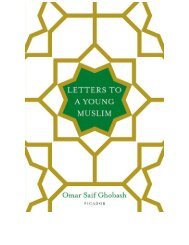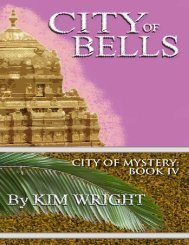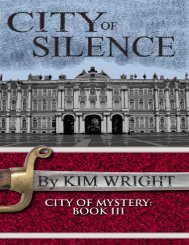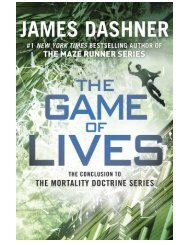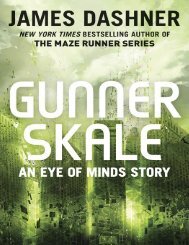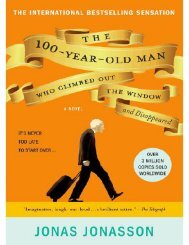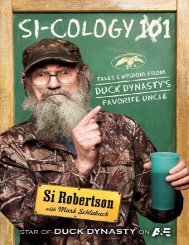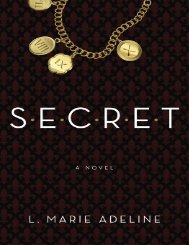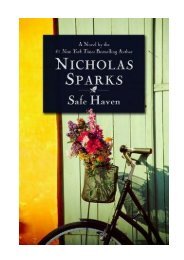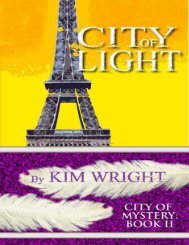Create successful ePaper yourself
Turn your PDF publications into a flip-book with our unique Google optimized e-Paper software.
failed her she’d use her wits. If I was about to get away she’d yell, “Stop! Thief!” She’d do this<br />
to her own child. In South Africa, nobody gets involved in other people’s business—unless it’s<br />
mob justice, and then everybody wants in. So she’d yell “Thief!” knowing it would bring the<br />
whole neighborhood out against me, and then I’d have strangers trying to grab me and tackle<br />
me, and I’d have to duck and dive and dodge them as well, all the while screaming, “I’m not a<br />
thief! I’m her son!”<br />
The last thing I wanted to do that Sunday morning was climb into some crowded<br />
minibus, but the second I heard my mom say sun’qhela I knew my fate was sealed. She<br />
gathered up Andrew and we climbed out of the Volkswagen and went out to try to catch a<br />
ride.<br />
—<br />
I was five years old, nearly six, when Nelson Mandela was released from prison. I remember<br />
seeing it on TV and everyone being happy. I didn’t know why we were happy, just that we<br />
were. I was aware of the fact that there was a thing called apartheid and it was ending and<br />
that was a big deal, but I didn’t understand the intricacies of it.<br />
What I do remember, what I will never forget, is the violence that followed. The triumph<br />
of democracy over apartheid is sometimes called the Bloodless Revolution. It is called that<br />
because very little white blood was spilled. Black blood ran in the streets.<br />
As the apartheid regime fell, we knew that the black man was now going to rule. The<br />
question was, which black man? Spates of violence broke out between the Inkatha Freedom<br />
Party and the ANC, the African National Congress, as they jockeyed for power. The political<br />
dynamic between these two groups was very complicated, but the simplest way to understand<br />
it is as a proxy war between Zulu and Xhosa. The Inkatha was predominantly Zulu, very<br />
militant and very nationalistic. The ANC was a broad coalition encompassing many different<br />
tribes, but its leaders at the time were primarily Xhosa. Instead of uniting for peace they<br />
turned on one another, committing acts of unbelievable savagery. Massive riots broke out.<br />
Thousands of people were killed. Necklacing was common. That’s where people would hold<br />
someone down and put a rubber tire over his torso, pinning his arms. Then they’d douse him<br />
with petrol and set him on fire and burn him alive. The ANC did it to Inkatha. Inkatha did it<br />
to the ANC. I saw one of those charred bodies on the side of the road one day on my way to<br />
school. In the evenings my mom and I would turn on our little black-and-white TV and watch<br />
the news. A dozen people killed. Fifty people killed. A hundred people killed.<br />
Eden Park sat not far from the sprawling townships of the East Rand, Thokoza and<br />
Katlehong, which were the sites of some of the most horrific Inkatha–ANC clashes. Once a<br />
month at least we’d drive home and the neighborhood would be on fire. Hundreds of rioters<br />
in the street. My mom would edge the car slowly through the crowds and around blockades<br />
made of flaming tires. Nothing burns like a tire—it rages with a fury you can’t imagine. As we<br />
drove past the burning blockades, it felt like we were inside an oven. I used to say to my<br />
mom, “I think Satan burns tires in Hell.”<br />
Whenever the riots broke out, all our neighbors would wisely hole up behind closed<br />
doors. But not my mom. She’d head straight out, and as we’d inch our way past the blockades,<br />
she’d give the rioters this look. Let me pass. I’m not involved in this shit. She was unwavering


